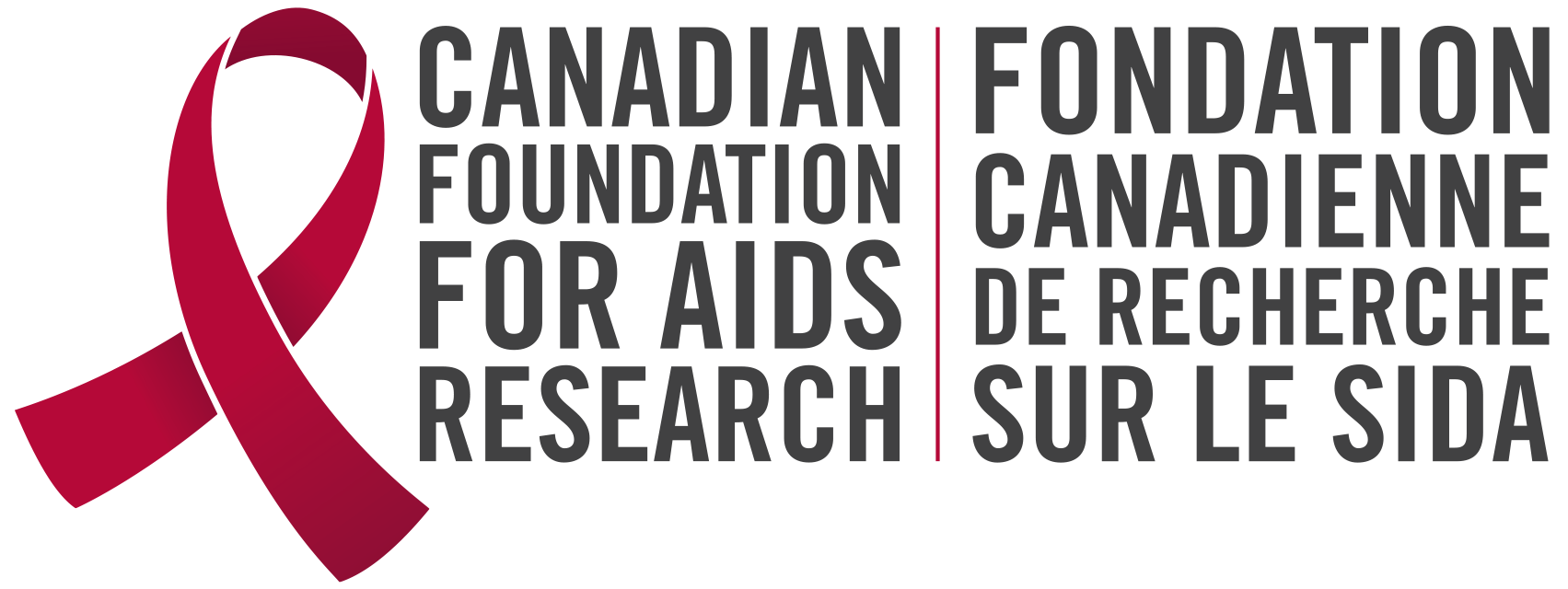CANFAR’s current research
CANFAR’s mission is to end the HIV epidemic in Canada by funding innovative research, launching national awareness programs and building national partnerships. We fund all areas of HIV research: Prevention, Treatment, Care & Cure.
CANFAR is pleased to announce that we are currently accepting submissions for Research Cycle 32, due Friday, May 31, 2024 at 5pm ET. Please click here for more information.
Research Cycle 31 (2023) Recipients
Dr. Mark Hull
Persons who use drugs remain at risk for HIV but remain underserved by HIV prevention technologies. As a key population in the HIV epidemic, it is imperative that we address the barriers that prevent this population from receiving the care they need. Dr. Hull’s research addresses the low PrEP knowledge/awareness and other barriers to PrEP uptake for people who use drugs and live with HIV in Vancouver. By understanding these barriers and facilitators of PrEP uptake within existing care structures, both from a community standpoint and from the perspective, opportunities to plan for innovative models of PrEP deliver can be exist for this priority population.
Dr. Petronela Ancuta
Co-investigators:
Dr. Isabelle Boucoiran – Ste Justine Hospital, Montréal
Dr. Cécilia Costiniuk – McGill University Health Center, Montréal
Mr. Ramon Edwin Caballero, PhD Student – McGill University, CHUM Research Centre
Mrs. Shari Margolese – Community Knowledge user
Dr. Ancuta’s research investigates immune system deficiencies in placental macrophages to understand how HIV operates in women receiving antiretroviral therapy (ART) as compared to women who are HIV-negative. Dr. Ancuta’s discoveries can fill crucial gaps in HIV research about the degree to which HIV infects cells in the placenta and whether this correlates with the prevalence of unfavorable pregnancy outcomes in HIV patients.
Read the full profile of this research study here.
Dr. Nathan Lachowsky
Long-acting HIV medications have the potential to significantly improve HIV care, but little research has been performed to identify community preferences and priorities for their implementation. Dr. Lachowsky’s qualitative, community-based research will uncover the important preferences and barriers for delivering long-acting HIV medications to populations that would most benefit from its introduction.
Understanding the preferences of various communities that are disproportionately affected by new HIV infections would help to enhance understanding, access, and acceptability of long-acting HIV medicines.
Dr. Patrick O’Byrne
PrEP has mostly been implemented passively in Canada, with individuals first learning about it and then seeking a healthcare center where it is available. Dr. Patrick Obyrne aims to improve that system by meeting people where they are. His research intends to identify those who face the highest risk and disadvantage in order to determine whether active PrEP offers will enhance adoption among members of equity-seeking groups. He expects that this will result in the best possible care and prevention outcomes for HIV-positive populations.
Dr. Jean-Pierre Routy
Multiple studies on HIV have shown the differences in how the virus affects immune control between controllers and progressors of HIV. Others have shown the differences in how the virus affects metabolic conrol between the same two groups. However, limited research is available to see if there is a link between the differences we see. Dr. Jean-Pierre Routy’s research aims to to find this connection and use it to define key characteristics associated with progressive HIV. By defining important traits that link the metabolic and immune system effects of HIV on a person, his work can pave the way for new innovative drug interventions.
Dr. Cecilia T. Costiniuk
NK cells play a critical role in regulating chronic infection and inflammation, and mounting evidence suggests they play important roles in chronic infections such as tuberculosis, and inflammatory disorders like asthma.
Despite numerous investigations on peripheral blood NK cells in HIV-infected individuals, virtually little is known as to how the infection affects NK cell compartment in lungs. Dr. Costiniuk is working to determine whether there is a correlation between NK cell profile (phenotype and function) and HIV reservoir size. Through the discoveries made in this investigation, we can find ways to relieve people living with HIV of some of the burdens of respiratory viruses and lung infection, considering now that due to therapies like ART, lifespans of PLWH now approach those of people without HIV infection and there has been a shift in the spectrum of lung infections and conditions afflicting PLWH.
Dr. Mark Watson
Research shows that Indigenous women are diagnosed with HIV at higher rates than the general population of Canadian women, yet HIV health-service delivery models do not consider Indigenous spirituality or epistemologies. Carrie Martin, a PhD student in Dr. Watson’s lab, explores the healthcare experiences experienced by Indigenous women living with HIV to inform the development of care models that responds to their unique needs.
Martin’s work seeks to ensure that the HIV care cascade along with HIV biomedical approaches include holistic Indigenous models of wellness. By doing so, we can improve the quality of life and health outcomes for Indigenous women living with HIV.
Cycles 28-30 (2016-2019) Recipients

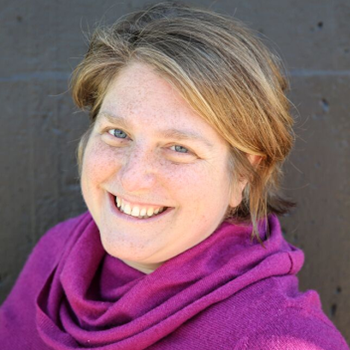

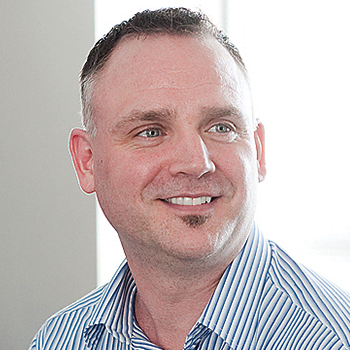
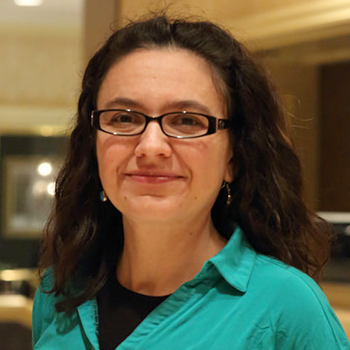



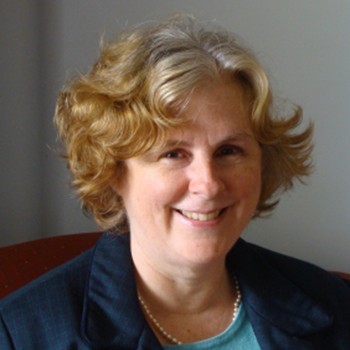



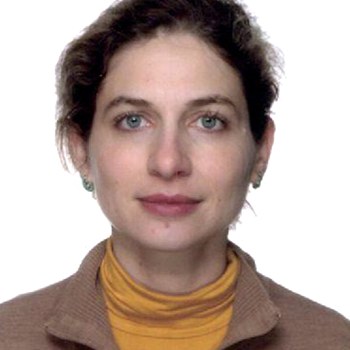
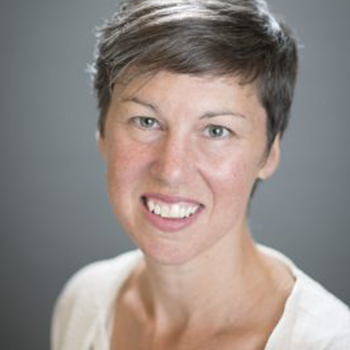

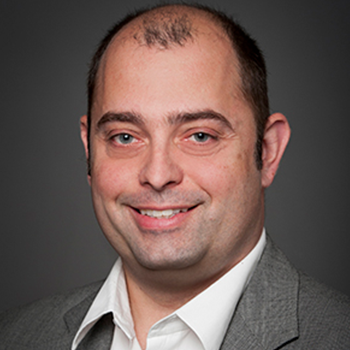










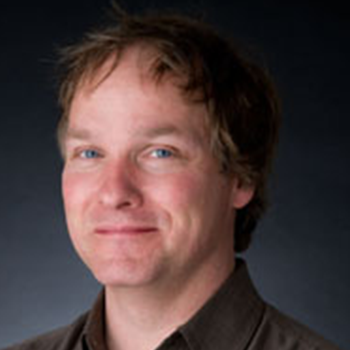
Prevention
Dr. Trevor Hart
More than half of new HIV infections in Canada are contracted by gay, bisexual and other men having sex with men.
This study works to understand the health needs and realities of this population in Vancouver, Toronto, and Montreal so that it can roll out more effective HIV prevention programs that serve this population. This study is headed by Dr. Trevor Hart and will engage with the community it is serving (Community Based Research) and determine best practices that can be replicated across the country in order to more effectively prevent new HIV infections.
CANFAR is partnering with The Canadian Institutes for Health Research (CIHR) and the Ontario HIV Treatment Network (OHTN) on this 5-year research and implementation project.
Dr. Erica Lawson
Dr. Erica Lawson’s proposed research seeks to understand how African, Caribbean and Black (ACB) migrant women living with HIV are affected by Canada’s policy regarding mandatory HIV screening for the Canadian immigration and refugee system.
ACB women represent one the fastest growing HIV positive populations in Canada accounting for more than half of the new diagnosis among women. The proposed qualitative research project will recruit 20 ACB migrant women living with HIV to participate in interviews and story-writing workshops. The experiences and input gathered from study participants will not only provide greater inclusion for people living with HIV but also equip service providers and policy makers with information on needs, barriers, and successes as identified by ACB migrant women living with HIV.
Dr. Sarah Flicker
Dr. Flicker’s research sets out to uncover harm reduction and HIV prevention possibilities for young women and girls engaged in transactional sex within the greater Toronto area.
The term transactional sex refers to trading sex for money, housing, commodities, alcohol and/ or drugs. This study will recruit 24 young women (16-25) engaged in transactional sexual relationship (s) and help study participants create a Cellphilm. Cellphilms are short cell-phone generated recordings that will be used to document the experiences and perceptions of negotiating for safer sex including access to HIV prevention technologies and sexual health practices for these young women. The aim of this project is to create a ‘composite’ video that will be used to incorporate the input from women involved in transactional sex to develop community health centre’s programmatic responses to transactional sex.
Dr. Nathan Lachowsky
In British Columbia, gay men make up a majority of new HIV diagnoses.
Therefore, in 2017 a fully funded PrEP program was rolled out in Vancouver targeting newly diagnosed HIV positive gay men. However, from 15 MSM that have been offered publicly funded PrEP, all have declined. Therefore, Dr. Lachowsky’s proposed qualitative research will conduct detailed interviews of gay men and their experiences with Vancouver’s PrEP public health program. Understanding the experiences of gay men in this program will provide better insight regarding perceptions, social norms, behaviours, and barriers to this PrEP program uptake.
Dr. Mathieu Maheu-Giroux
Over the past two decades the rate of HIV infections has remained stable in Quebec.
However, gay men under the age of 35 are a high-risk demographic for HIV infection and transmission. The goal of this research is to identify what type of prevention strategies are effective for gay men in Montreal. Dr. Maheu-Giroux research will model the HIV epidemic in Montreal to describe how HIV transmission has changed and identify gaps in the current public health response. Additionally, this research will explore the variety of combination HIV prevention strategies available and select the ones that could eliminate HIV within a 10-year period based on economic feasibility and the potential to maximize population health.
Dr. David Brennan
Half of individuals are living with HIV in Canada are gay, bisexual and other men who have sex with men (MSM).
Moreover, in Ontario, 60% of all people living with HIV/AIDS (PHAs) are MSM and they are the only group with increasing HIV incidence. Dr. Brennan and his colleagues will attempt to understand the relationship between MSM’s access to online sexual health information and services and their risk of HIV as well as uptake of sexual health promotion and care.
Dr. Beatriz Alvarado-Llano
Positive prevention (or “poz prevention”) is an HIV intervention that aims to empower HIV-positive individuals, strengthen their sexual health and well-being, and reduce their probability of new HIV infections.
There are very few of these interventions in Canada and none addressing needs of HIV-positive Latinos. Thus, our project search to pilot a “positive prevention” intervention named Gay Poz Sex (GPS) that was implemented successfully in English speakers HIV-positive gay men living in Canada. Working with and for those Latino populations living with HIV in Canada, our project will have as objectives: 1) To train members from the HIV Latino communities as GPS facilitators. 2) To assess feasibility of GPS implementation in AIDS service organizations across Ontario who serve a high number of Latino populations, 3) To evaluate the implementation process and propose final changes to “GPS Latino”, and 4) to assess the effectiveness of GPS in terms of increase use of condoms and increase confidence in their sexual life.
Treatment
Dr. Sadhna Joshi
Dr. Joshi is also currently working on another project, as follows. Funded by Manulife.
An alternative treatment modality to existing drug treatments that result in the emergence of HIV resistant strains, is to use antiviral proteins (AVPs) that inhibit HIV entry. Dr. Sadhna Joshi research developed multifunctional AVPs to block virus attachment to the target cells and inhibit fusion between viral and cellular membranes, thereby inhibiting HIV infection. Dr. Joshi’s study has shown that two bi-functional AVPs, sCD4-scFv17b and sCD4-FIT45 can effectively inhibit HIV infection in vitro. Production and antiviral activity of these proteins will be further evaluated. For treatment, these proteins may be secreted from patients’ own cells that may be genetically modified. For prophylaxis, the antiviral proteins may be continuously secreted from genetically engineered strains of microorganisms that inhabit these sites.
Dr. Lena Serghides
The use of HIV medication in pregnancy has been tremendously successful in radically reducing the risk of HIV transmission.
However, the specific risks associated with exposure of the developing fetus to HIV medication during pregnancy are not fully known. Accumulating evidence suggests exposure to ARVs adversely affects fetal and infant development and brain development and function, however, those studies face many unavoidable confounding factors. By using animal models, this study will provide greater clarity by investigating drug toxicities. This study will uncover the impact HIV medication has on fetal and infant development using cellular imaging, behavioural testing, and magnetic resonance imaging.
Dr. Kellie Murphy
Dr. Murphy’s team has identified that progesterone, a hormone that plays a very important role in fetal development during pregnancy, is lower with exposure to certain antiretrovirals and that levels of progesterone in HIV-positive pregnant women directly correlate with birth weight.
In an animal model, we showed that by supplementing with progesterone we were to reverse the birth weight deficits caused by antiretroviral therapy. The ProSPAR study is a randomized, controlled clinical trial of progesterone supplementation in HIV-positive pregnant women on antiretroviral therapy. The trial will test the feasibility of performing a larger efficacy trial, will collect safety data, and will assess the acceptability and compliance rate of women to this intervention. The trial will also collect preliminary efficacy data, i.e. birth weight differences with progesterone use.
Dr. Nicole Bernard
While most patients living with HIV require medication (antiretroviral therapy) to keep the virus under control, there is a small population whose own immune systems fight HIV well enough to keep the virus down to undetectable levels without any medication.
In her research, Dr. Bernard seeks to understand what is different about these individual’s immune systems, and to apply this information to make therapies to help others’ similarly fight off HIV. Specifically, she is interested in looking at their antibodies. Antibodies are the molecules their immune systems send to recognize and fight off HIV; virus-specific antibodies are also what’s delivered in a vaccine. In this study, Dr. Bernard is taking samples of antibodies from people living with HIV who either can control the virus without antiretroviral therapy or are receiving therapy to control the virus. She is then testing these antibodies on HIV-infected cells in her lab, and finding out how they perform to control the HIV virus. Understanding how the immune system does or does not properly control HIV will help Dr. Bernard to design immune therapies and vaccines to help patients control the HIV virus without, or in addition to, antiretroviral therapy.
Dr. Marie-Josee Brouilette
Mild cognitive problems are relatively common in people with longstanding HIV infection, although in most cases are not rapidly progressive.
Goal Management training (GMT) is a cognitive therapy that has been successfully used to improve cognition in a variety of neurological conditions, as well as in healthy older people with cognitive concerns. However, the effects of this intervention in people living with HIV are unknown. The present study aims to provide evidence about whether GMT is feasible for people with cognitive concerns who are living with HIV, and whether it improves cognitive performance. This in-person intervention trains participants in techniques to improve their focus and concentration and includes exercises to improve awareness and mindfulness. Participants work in small groups with a trained therapist once a week and practice the techniques they learn at home. It is a pilot study, comparing 30 people randomly assigned to receive GMT for 7 weeks to 30 people who will be on a waitlist for that time period, and then receive GMT. Cognition will be assessed with questionnaires, and with computer tests, before starting the training, and after it is finished.
Care
Dr. Darrell Tan
In Canada, a new prevention strategy called PrEP (pre-exposure prophylaxis) is being prescribed for high risk individuals, which calls for the daily use of HIV medication prior to infection.
However, PrEP is controversial because there are gaps in research regarding its prevention potential that may be affected by risk behaviour, sexual transmission, patient adherence to medication, and stigmatization. There are also concerns regarding equitable access because the majority of high risk HIV individuals also belong to marginalized communities. Dr. Darrell Tan is investigating these concerns by studying 1250 PrEP users in Ontario in a cohort study over 3 years. The results from this study will help inform future PrEP programs and improve PrEP accessibility in Canada.
CANFAR is partnering with the Ontario HIV Treatment Network (OHTN) and REACH 2.0 for this 3-year research partnership.
Dr. Malika Sharma
CANFAR is proud to have supported postdoctoral fellowships through the Canadian HIV Trials Network (CTN). This is our fifteenth year supporting a new researcher who is breaking into the HIV field.
This year, Dr. Malika Sharma has been looking at how to empower patients to educate their doctors on the value of PrEP. Encouraging doctors to learn more about the drug will improve the roll-out potential and ensure that more people who want or need access to the medication will receive it.
Dr. Isabelle Boucoiran
For mothers living with HIV, there’s a risk of transmitting the virus through breastfeeding, even when they are on treatment and have undetectable traces of the virus in their breast milk.
However, when a woman does not breastfeed after giving birth, lactation can cause pain and swelling. Cabergoline is a new drug available in Canada that stops lactation to prevent this pain and swelling. While the drug has been found to be safe and effective for healthy mothers who choose formula feeding, there has been no research to confirm that it is also safe and effective for mothers who are living with HIV and receiving treatment. Dr. Boucoiran is studying a group of 60 women at both Sainte-Justine Hospital in Montréal and B.C. Women’s Hospital in Vancouver to determine if Cabergoline is as effective at stopping lactation in women living with HIV, and whether it causes any negative side effects for these new mothers.
Dr. Stephanie Nixon
In Canada, many people living with HIV are able to live healthy and sustained lives.
Current medication in the form of antiretroviral therapy (ART) treats the virus and many health services, programs, and community initiatives help support people with the psychological, economic, and social aspects of the disease. This life-saving treatment is slowly becoming more accessible to people in resource-poor regions. For example, ART is now freely available to the 25 million people living with HIV in Zambia. Now that Zambians living with HIV can more readily access treatment, the next step is to ensure services help them not just survive HIV, but also thrive while living with the disease. Dr. Stephanie Nixon and a group of community-based researchers have launched a pilot project based in Zambia that is looking at successful HIV care practices there and in Canada, with the goal of scaling up and testing these services across Zambia and other resource-poor settings around the world.
Dr. Olivier Ferlatte
Dr. Ferlatte’s proposed qualitative study examines suicide ideation among gay men living with HIV in British Columbia.
The researchers propose to conduct interviews with 25 gay men living with HIV in British Columbia and will require participants to take photographs illustrating their experiences and perspectives. This type of research is known as “Photovoice”. Understanding participant’s experiences and perspectives will help inform suicide prevention efforts.
Dr. Marc-Andre Langlois
The problem with current medication is that it suppresses HIV to low levels but does not eliminate it.
Unfortunately, there is no instrument powerful enough to detect low levels of HIV. However, Dr. Langlois’s project is developing a new technique using nanoscale flow cytometry, to detect and quantify rare markers of HIV. If successful, it would be an inexpensive and quick way to accurately identify low levels of elusive HIV in the body, contributing to the elimination of HIV reservoirs.
Cure
Dr. Hugo Soudeyns
The EPIC4 project is a 5-year prospective study of children exposed to HIV at birth through vertical transmission (mother to child).
The goal of this study is to understand if curing HIV in these children is possible when starting medication very early for children born with HIV. Research, headed by Dr. Hugo Soudeyns in Canada, is in collaboration with other HIV researchers around the world.
CANFAR is partnering with the Canadian Institutes for Health Research (CIHR) and the International AIDS Society (IAS).
Dr. Éric Cohen
CanCURE (Canadian HIV Cure Enterprise) is a research collaboration of scientific investigators focused on studying HIV persistence and developing effective strategies towards a functional cure.
Headed in Canada by Dr. Éric Cohen, to date there are more than 22 studies that have resulted from this partnership. They have ranged from identifying HIV characteristics at a cellular level to testing possible drug treatments.
CANFAR is partnering with the Canadian Institutes for Health Research (CIHR) and the International AIDS Society (IAS), collaborating with HIV researchers around the world to find a cure for HIV.
Dr. Christopher Power
Dr. Power’s research seeks to investigate HIV expression in the brain and how HIV reservoirs in the brain can be reduced using current and new therapies.
HIV positive patients receiving combination antiretroviral therapy are at risk of HIV mediated brain damage termed “HIV associated neurocognitive disorder” (HAND). In fact, a quarter of HIV patients receiving medication are affected by some form of brain damage. The first goal of this project is to identify the presence of HIV in the human brain. The second goal is to understand the interaction of HIV in the brain among patients resistant to HIV medication. The third goal of this project is to understand how HIV in brain cells react to new medications. Dr. Power’s research is investigating a relatively unknown field of HIV expression in the brain in order to better create a functional cure.
Dr. Sadhna Joshi
Dr. Joshi’s proposed research is part of a series of projects with the goal of using a patient’s own stem cells for a one-time gene therapy to treat HIV patients. Funded by Manulife.
The problem with traditional medication is that although it suppresses HIV replication, it requires life-long adherence to treatment plans that ultimately cannot eliminate HIV reservoirs completely. The benefit of using a patient’s stem cells is that it will allow patients to produce their own antivirals for life. Dr. Joshi’s lab is the first to develop this type treatment using bi-functional antiviral proteins. These proteins are produced in the cell and interfere with HIV replication, ultimately leading to a functional cure. This experiment will test if two specific proteins can control HIV infection in humanized mice models and whether they can overcome any resistance that arises from HIV. If testing is successful, the implications of this experiment is that it may lead to a translatable clinically functional cure.
Dr. Alan Cochrane
Dr. Cochrane’s research is unique to the HIV research community because it explores creating an HIV cure that is based on disrupting HIV gene expression and replication by manipulating the HIV-RNA process.
DNA is transcribed into RNA which is then translated into proteins by the cell. Therefore, the goal of this research is to suppress HIV gene expression with minimal effect on the cell. Understanding this process is important for the development of new approaches to controlling HIV expression and replication. Dr. Cochrane’s hopes his research project will be able to examine the effect of a select group of proteins responsible for recognizing and changing DNA involved in HIV expression. Further, Dr. Cochrane’s research will be utilized to identify and understand the differences between protein families responsible for HIV gene expression.
Dr. Michael Grant
The human immune system is constantly monitoring whether our cells are healthy. Funded by Manulife.
When it recognizes a cell that is unhealthy, the immune system triggers a series of responses to fight this off. Some people are born with immune cells that cannot properly recognize unhealthy cells. These people have a higher risk of HIV infection and the disease progresses faster when they are living with HIV. In Dr. Grant’s study, he will be looking at a group of people with this particular deficiency that are not living with HIV but do have another viral infection. He is studying how their immune system tries to work around the deficiency to fight off this less severe virus, and how he can apply the body’s natural defense mechanisms to fight HIV.
Dr. Zabrina Brumme
To date, there is no cure for HIV. Current medication (antiretroviral drugs) have successfully prolonged the life expectancy of people living with HIV, but are unable to completely remove HIV virus from the body. Antiretroviral therapy lowers the amount of virus to a point where it is undetectable in blood samples, but leaves behind a small “reservoir” of HIV virus, which can grow as soon as therapy is stopped. A “cure” for HIV will only exist when we discover a way to kill off the leftover reservoir. Scientists have tried to develop drugs that target HIV reservoirs, but so far, none have been successful. Dr. Brumme and her team are trying to find new drugs that will solve this problem. They looked at natural sources – chemicals found in the ocean and traditional African medicines – and discovered 8 new molecules that seem to have an effect on HIV reservoirs, at least in cells in their lab. Now, Dr. Brumme and her team will take a closer look at why these molecules work, and how exactly they work, by treating cells taken from human patients with HIV. Their hope is to get a better understanding of how we can target HIV reservoirs, and to discover new drugs with potential to help cure HIV when taken along with antiretrovirals.
Dr. Linda Chelico
When the HIV virus enters the human body, it is immediately recognized and attacked by the immune system.
Because of this, the HIV virus has to overcome many barriers in order to successfully infect the body for a prolonged period of time and develop into AIDS. In almost every case, HIV is able to overcome these barriers and defeat the human immune system. HIV is successful because the virus sends out defense chemicals that block the immune system, allowing it to multiply and infect more parts of the body. Dr. Linda Chelico and her research group are studying one of these defense chemicals produced by HIV called Vif. Vif blocks a specific attack from the immune system that would otherwise prevent HIV from multiplying. In this study, Dr. Chelico is designing drugs that stop Vif from working, in turn preventing HIV from multiplying and the HIV infection from progressing. She is then testing these drugs. In her lab, in human cells infected with HIV, to see whether they effectively stop HIV infection.
Dr. Michael Tremblay
Previous research has shown the presence of active HIV virus in blood cells and it is believed that these cells provide a long-term reservoir for the virus.
Dr. Tremblay’s lab has previously shown that a particular type of protein can transport the virus and could potentially infect blood cells. However, this has not been firmly established. This study aims to understand how this protein can harbour and transmit the virus. Secondly, it seeks to understand what factors make the blood cells suitable reservoirs for the virus.
Dr. Mouland studies how the HIV virus infects human cells. The HIV virus uses human white blood cells to multiply itself, which can then spread to more cells, and repeat the process. When human cells are infected by less severe viruses, such as the flu, they can kill the virus particles through a process called “autophagy.” Autophagy is the process through which a cell digests old or damaged parts of itself. When a virus particle enters a cell, autophagy is used to digest the virus, essentially eating it. One of the reasons why the HIV virus is so successful is because it sends out chemical signals that tell autophagy to stop, protecting HIV from digestion. In this study, Dr. Mouland is closely observing HIV-infected cells in his lab and studying how exactly the HIV virus avoids autophagy, i.e. what is the chemical signal it sends out, and how does this signal tell autophagy to stop? In order to design drugs that interfere with HIV’s ability to stop autophagy, we first need to understand how it does so in the first place, and that is precisely what Dr. Mouland will try to discover in his study
